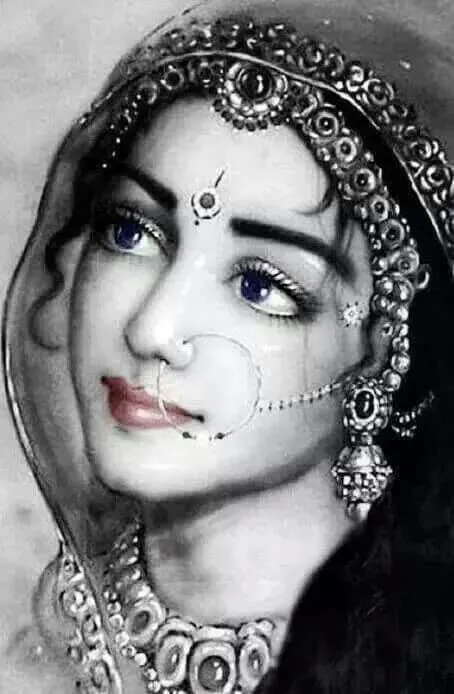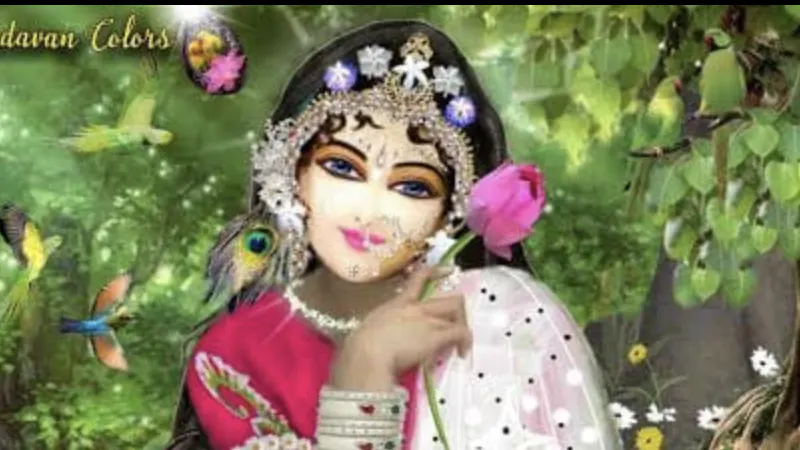Women as Gurus in Rasika Prema Bhakti: A Theological and Spiritual Necessity
“May we all be disciples of Śrī Rādhā’s love, following in the footsteps of those who carry Her mood in this world, whatever form they take.”

In the sacred tradition of rasika prema bhakti, the ultimate aspiration is to enter into loving service of Śrī Kṛṣṇa in the mood of Vraja—most deeply through the guidance of the gopīs, the eternal associates of Rādhā and Kṛṣṇa. At the heart of this path lies the cultivation of intimate rasa (spiritual emotion) and prema (divine love). Any external consideration—be it gender, caste, or social standing—is not only secondary, but an obstruction when used to judge spiritual eligibility. The question then arises: can women be gurus and spiritual teachers in this exalted path?
The answer, from both śāstra and rasa-tattva, is not merely “yes”—it is necessarily yes.
Rādhā: The Guru of Kṛṣṇa
The foundational premise for the legitimacy—and necessity—of women as spiritual teachers in prema bhakti rests in the theological truth that Śrīmatī Rādhārāṇī, a woman, is the guru of Śrī Kṛṣṇa Himself.
In Caitanya-caritāmṛta (Ādi-līlā 4.124), we read:
rādhikāra prema — guru, āmi — śiṣya naṭa
sadā āmā nānā nṛtye nācāya udbhaṭa
"The love of Rādhikā is My teacher, and I am Her dancing pupil. Her prema makes Me dance various novel dances."
Here, Kṛṣṇa acknowledges Himself as a disciple of Rādhā’s love. Her prema is so powerful, so profound, that even the Supreme Lord is made mad and transformed by it.
Furthermore, in verses 119–120 of the same chapter, we find Kṛṣṇa’s confession that although He is the origin of all rasa, He could not fully taste the sweetness of Rādhā’s love. Hence, He incarnates as Śrī Caitanya Mahāprabhu:
ei mata pūrve kṛṣṇa rasera sadana
yadyapi karila rasa-niryāsa-carvaṇa
tathāpi nahila tina vāñchita pūraṇa
tāhā āsvādite yadi karila yatana
"Although Kṛṣṇa is the reservoir of all transcendental mellows, He could not taste three aspects of Rādhā’s love. Thus, He took efforts to taste it by becoming Her devotee."
Śrī Caitanya Mahāprabhu, the combined form of Rādhā and Kṛṣṇa, came specifically to experience the female mood of devotion—the mood of a servant-lover, not the enjoyed, but the enjoyer of Kṛṣṇa's beauty. In doing so, He sanctified and elevated the feminine spiritual experience as the supreme path.
The Gopīs: Supreme Teachers of Prema
The Śrīmad Bhāgavatam (10.32.22), expresses Kṛṣṇa’s deep longing for the gopīs:
na pāraye ’haṁ niravadya-saṁyujāṁ
sva-sādhu-kṛtyaṁ vibudhāyuṣāpi vaḥ
"I am not able to repay My debt for your spotless service, even over the lifetime of the gods."
The gopīs, simple village girls externally, are the pinnacle of devotional attainment. Śrīla Rūpa Gosvāmī writes in Ujjvala-nīlamaṇi that their love is the parama-rasamayī-bhakti—the highest form of devotion in all creation. If they are our ideal, then why should their present-day reflections—women steeped in bhāva—be barred from spiritual leadership?
The Guru-Tattva Transcends Gender
The guru is not the body but the transparent via medium (vyāpak-tattva) of divine grace. Śrīla Jīva Gosvāmī, in Bhakti Sandarbha (Anuccheda 237), defines the guru as one who transmits bhakti-śakti by their association and instruction. Nowhere does he specify that the guru must be male.
In fact, historical tradition supports female teachers:
Śrī Jahnavā Mā (wife of Nityānanda Prabhu) was accepted as a preeminent ācāryā after the disappearance of Mahāprabhu’s main associates.
Śrīmatī Hemalatā Ṭhākurāṇī, the daughter of Śrīnivāsa Ācārya, was a respected teacher of advanced Vaiṣṇavas.
Śrīla Bhaktivinoda Ṭhākura and Śrīla Bhaktisiddhānta Sarasvatī Ṭhākura acknowledged the spiritual potential of women and insisted that initiation (dīkṣā) and instruction (śikṣā) must be based solely on spiritual realization, not bodily identity.
Śrīla Bhaktivedanta Swami Prabhupāda (Founder-Ācārya of ISKCON) explicitly confirmed in several letters (e.g., 1969, to Silavati Dāsī) that women can act as spiritual masters and initiate disciples, so long as they are qualified.
Jagadguru Śrī Kripālu Ji Mahārāj affirmed that devotion transcends gender, citing the gopīs as the highest ideal of bhakti. He established institutions like Kripalu Mahila Mahavidyalaya to empower women spiritually and educationally. His organization is today run by his daughters and other female leaders.
Patriarchy: A Cultural Bias, Not a Spiritual Truth
Despite these clear examples and scriptural supports, patriarchal ideas persist—especially in South Asian contexts. This reflects not the spirit of the Bhāgavatam, but the residue of social structures rooted in control and hierarchy.
In Bhagavad-gītā 5.18, Kṛṣṇa states:
vidyā-vinaya-sampanne brāhmaṇe gavi hastini
śuni caiva śva-pāke ca paṇḍitāḥ sama-darśinaḥ
"The wise see equally a brāhmaṇa, a cow, an elephant, a dog, and an outcaste."
How, then, can we claim spiritual wisdom while discriminating against women? The path of bhakti is meant to dissolve false identities—na jātiṁ na śīlaṁ na kulaṁ na karma (Hari-bhakti-vilāsa 10.91)—and bring the soul to its eternal service identity (svarūpa) in the spiritual world.
The persistence of patriarchy within religious institutions—particularly in traditional Indian society—has often been justified through selective scriptural interpretations and misapplications of dharma-śāstra. However, such biases reflect historical social arrangements, not transcendental truths. True sanātana-dharma, as illuminated in the Bhāgavatam and by realized saints, is rooted in the soul's relationship with God, not the body’s temporary identity. When we restrict women from acting as gurus or spiritual authorities based on gender, we not only do injustice to individual souls, but we also distort the very nature of bhakti, which is inclusive, liberating, and based on prema—not power. As long as remnants of patriarchal control dominate the religious discourse, the full blossoming of prema-bhakti, especially in its tender and intimate forms, will remain hindered. To uphold spiritual truth, we must shed cultural prejudices and return to the essence: the soul's loving surrender to Kṛṣṇa, as guided by those—male or female—who have realized it.
Why Women May Be Especially Suited to Teach Prema Bhakti
The moods most cherished in prema bhakti—surrender, softness of heart, relational depth, and emotional subtlety—are often more naturally accessible to women. This is not to stereotype, but to acknowledge the spiritual gifts that many women bring. In cultivating mādhurya-rasa, it is the female voice, the Gopī-bhāva, that guides us. Who better to lead us toward that inner transformation than a rāsika woman whose heart already beats with that divine longing?
Conclusion: The True Guru Is the Embodiment of Prema
To accept a woman as a guru is not to “make an exception” to a rule—it is to honor the very foundation of our tradition. If Rādhārāṇī is the guru of God, if Mahāprabhu came to experience Her love, if the gopīs are our ideal, then it is both rational and deeply spiritual to accept women as authentic carriers of this love.
The path of rasika bhakti calls for humility, not hierarchy—for intimacy, not institutionalism. Let us shed our external biases and bow at the feet of those whose hearts burn with the flame of prema, regardless of gender. For in their light, we too may begin to see the path to Goloka Vṛndāvana. ¶



